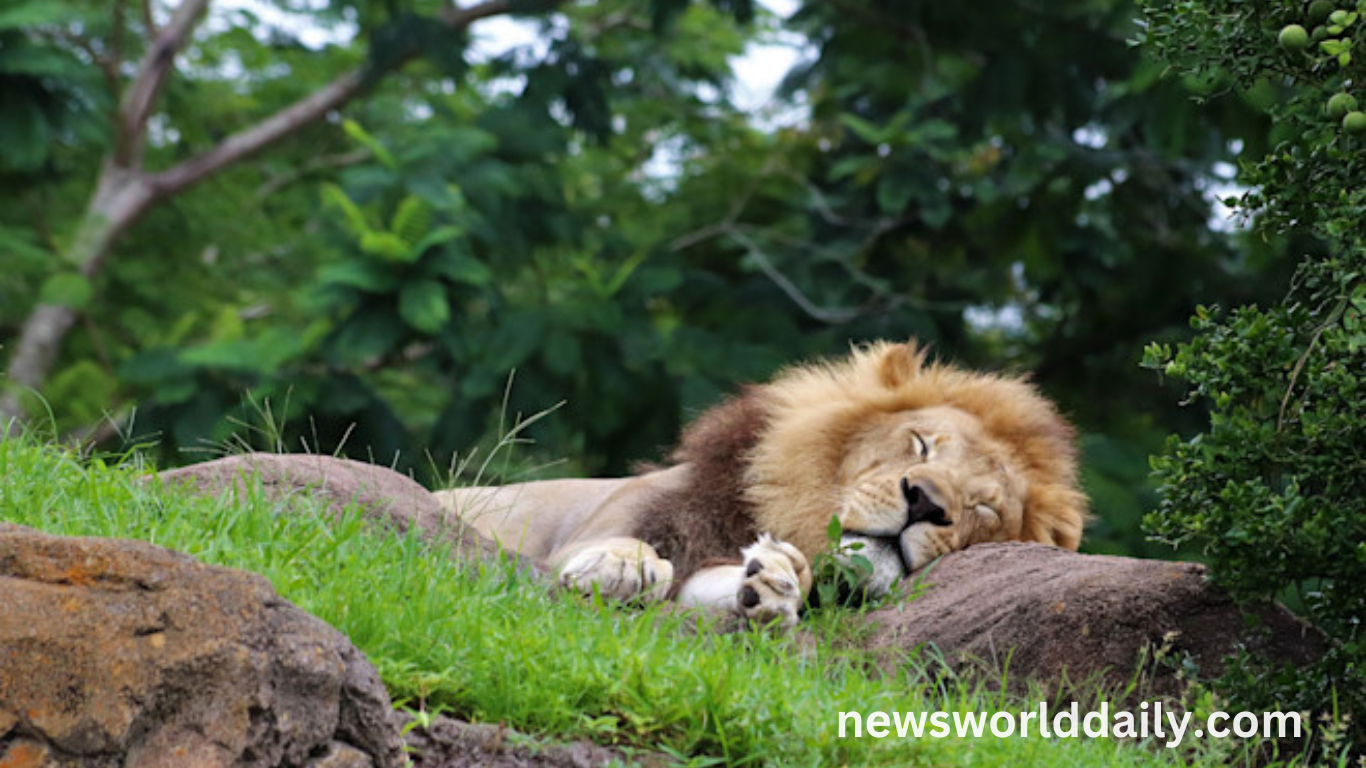Koala – The Sleep Master of the Trees
Spending up to 22 hours a day asleep, the koala sets the gold standard for laziness in the animal kingdom. With a low-energy diet of eucalyptus leaves, which are tough to digest and offer little nutrition, koalas conserve energy by napping almost all day. When awake, their movements are minimal and deliberate, built entirely around resting and digestion.
Sloth – The Icon of Slow Living
A creature that defines the word “leisure,” the sloth moves at a glacial pace of 0.03 miles per hour. It spends most of its life hanging upside down from trees, sleeping 15 to 20 hours per day. Even when awake, a sloth prefers to stay in one spot for hours, avoiding any form of energetic activity unless absolutely necessary.
Python – The Patient Predator
Not typically seen as lazy in the traditional sense, the python has a different kind of stillness. It can go weeks or even months without eating after a single large meal. Rather than hunt daily, it patiently waits for the perfect opportunity, strikes once, and then retreats to a long digestive slumber. Efficiency and minimal effort define its lifestyle.
Giant Panda – The Slow Grazer
Though adorable and iconic, the giant panda spends most of its time slowly munching on bamboo and lying around. It consumes food for nearly 10–14 hours a day, but moves sluggishly and rests often between meals. Its diet lacks energy-dense nutrients, making long periods of inactivity necessary to maintain its laid-back rhythm.
Nurse Shark – The Couch Potato of the Ocean
Unlike many of its fast-swimming cousins, the nurse shark is a bottom-dweller that spends most of its time resting on the ocean floor. It’s one of the few sharks that can breathe while stationary, thanks to a unique adaptation that allows it to pump water over its gills without needing to swim. Movement is occasional, and usually for food or minor relocations.
Read More : How Old Is the Oldest Sea Turtle?
Opossum – The Master of Playing Dead
The opossum is not only known for its famous “playing dead” defense, but also for its surprisingly inactive lifestyle. These nocturnal creatures forage slowly, rest frequently, and avoid confrontation at all costs. Their lazy habits are actually clever survival strategies, using energy only when absolutely required.
Frequently Asked Questions
Why are some animals naturally lazy?
Certain animals have evolved to conserve energy due to low-nutrition diets or survival strategies that require minimal movement.
Do lazy animals sleep more than others?
Yes, many so-called lazy animals, like koalas and sloths, sleep for up to 20+ hours daily.
Is being lazy a disadvantage in the wild?
Not necessarily. In many cases, laziness helps conserve energy, avoid predators, and adapt to limited resources.
Are sloths really as slow as they seem?
Yes, sloths are among the slowest animals on Earth, moving only when necessary and at extremely slow speeds.
Why do koalas sleep so much?
Koalas survive on eucalyptus leaves, which are low in nutrients. Sleeping helps them digest and conserve energy.
Do pandas sleep as much as sloths?
Pandas sleep a lot, but they also spend many hours eating bamboo. Their activity levels are low but not sloth-like.
What makes nurse sharks so inactive?
Nurse sharks can breathe without swimming, allowing them to rest for long periods on the ocean floor without expending energy.
Are lazy animals endangered due to their inactivity?
Some, like the giant panda, are endangered—but not due to laziness. Habitat loss and low reproduction rates are bigger threats.
Conclusion
The animal kingdom isn’t all about speed, strength, and nonstop action. Some creatures have mastered the art of taking it slow—and thriving because of it. From tree-hugging koalas to floor-hugging sharks, these animals show that sometimes, the lazy life is the smart life.









